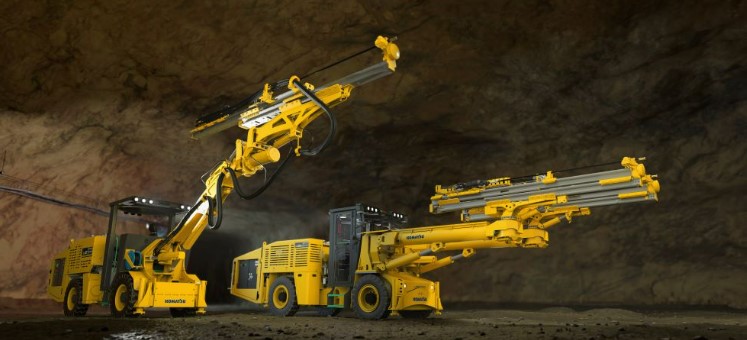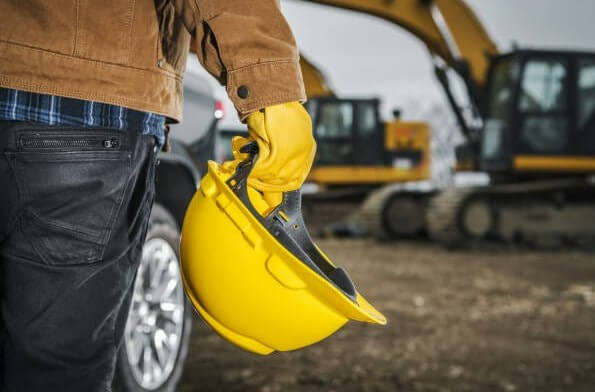
Mining is an essential industry that significantly contributes to the economy by providing raw materials needed for various sectors. The extraction of valuable minerals and metals from the earth requires sophisticated machinery and equipment. Mining equipment plays a critical role in this process, enhancing efficiency, safety, and productivity. In this comprehensive guide, we'll explore the common types of mining equipment, their functionalities, and their importance in modern mining operations.
1. Excavators
Overview
Excavators are heavy-duty machines commonly used in mining for digging and moving large amounts of earth and other materials. These machines are equipped with a powerful hydraulic system that operates the arm, bucket, and cab.
Functions
Earthmoving: Excavators are primarily used to dig and remove overburden, which is the layer of soil and rock covering mineral deposits.
Material Handling: They transport the excavated materials to dump trucks or conveyor belts.
Mining and Extraction: In some mining operations, excavators are used to directly extract minerals and ores from the earth.
Importance
Excavators improve the efficiency and speed of mining operations. Their ability to handle large volumes of material reduces the time and labor required for excavation, making them indispensable in the mining industry.
2. Drills
Overview
Drills are essential mining equipment used to create holes in the earth's surface for various purposes, including exploration, blasting, and extracting minerals.
Types
Blast Hole Drills: Used to drill holes for explosives in surface mining operations.
Rotary Drills: Common in large-scale mining operations, these drills rotate to cut through rock and soil.
Percussion Drills: Use a hammering action to break rock and are often used in underground mining.
Functions
Exploration: Drills are used to explore potential mining sites by sampling soil and rock.
Blasting: Creating holes for explosives to fragment rock, making it easier to extract minerals.
Extraction: In some cases, drills are used to extract valuable minerals directly from the rock.
Importance
Drills enable precise and efficient exploration and extraction processes. They play a vital role in identifying viable mining sites and enhancing the productivity of mining operations.
3. Loaders
Overview
Loaders are versatile machines used to load materials onto trucks, conveyor belts, or other equipment. They come in various sizes and configurations, including wheel loaders, track loaders, and underground loaders.
Functions
Material Handling: Loaders transport and load materials such as soil, rock, and ore.
Stockpiling: They are used to create stockpiles of materials for processing or transport.
Clearing and Leveling: Loaders can also be used to clear debris and level the ground in mining sites.
Importance
Loaders streamline the process of moving and loading materials, significantly reducing the time and labor required. Their versatility and efficiency make them a critical component of mining equipment.
4. Haul Trucks
Overview
Haul trucks, also known as dump trucks, are used to transport large quantities of material from mining sites to processing plants or disposal areas. These trucks are specifically designed to handle the rugged conditions of mining environments.
Types
Articulated Haul Trucks: Feature a pivot joint, allowing for better maneuverability on rough terrain.
Rigid Haul Trucks: Built with a fixed chassis, suitable for transporting heavy loads over long distances.
Functions
Material Transport: Haul trucks move extracted materials, such as ore and waste rock, from the mine site to processing facilities.
Dumping: These trucks are equipped with hydraulic systems that allow them to dump their loads efficiently.
Importance
Haul trucks enhance the efficiency of material transport in mining operations. Their capacity to carry large loads reduces the number of trips required, saving time and fuel costs.

GET IN TOUCH
The ultimate solution for reliable power control! call us at 276-285-3841
5. Conveyor Systems
Overview
Conveyor systems are used to transport materials over long distances within mining sites. They consist of a series of belts and rollers that move continuously to transport materials.
Functions
Material Transport: Conveyors move materials from one point to another, such as from the excavation site to the processing plant.
Stockpiling: They are used to create stockpiles of materials for later processing.
Sorting and Processing: Some conveyor systems are equipped with sorting mechanisms to separate different types of materials.
Importance
Conveyor systems improve the efficiency of material handling in mining operations. They reduce the need for manual labor and enhance the speed and reliability of material transport.
6. Crushers
Overview
Crushers are machines used to reduce the size of large rocks and stones. They are essential in the initial stages of mineral processing, where raw materials are crushed into smaller, manageable pieces.
Types
Jaw Crushers: Use compressive force to break down materials.
Cone Crushers: Utilize a rotating piece of steel against a stationary piece to crush rock.
Impact Crushers: Use impact force to break materials.
Functions
Size Reduction: Crushers reduce large rocks into smaller pieces for further processing.
Material Preparation: They prepare materials for secondary crushing or for use in other mining equipment.
Importance
Crushers enhance the efficiency of mineral processing by reducing the size of raw materials. This makes subsequent processing stages more manageable and improves the overall productivity of mining operations.
7. Screening Equipment
Overview
Screening equipment is used to separate different sizes of materials, ensuring that only the appropriately sized materials proceed to the next stage of processing.
Types
Vibrating Screens: Use vibration to separate materials based on size.
Trommel Screens: Utilize a rotating drum to sort materials.
Functions
Material Separation: Screens sort materials based on size, removing unwanted particles.
Quality Control: Ensure that only properly sized materials are used in further processing.
Importance
Screening equipment improves the quality and consistency of materials used in mining operations. By removing unwanted particles, screens enhance the efficiency of subsequent processing stages.
8. Underground Mining Equipment
Overview
Underground mining requires specialized equipment designed to operate in confined spaces and challenging conditions. This equipment includes various machines and tools used to extract minerals from beneath the earth's surface.
Types
Continuous Miners: Machines with a rotating drum that continuously extracts material.
Longwall Miners: Used in coal mining, these machines extract entire sections of a coal seam.
Roof Bolters: Machines that install roof bolts to support the roof of underground mines.
Functions
Material Extraction: Continuous and longwall miners extract materials from underground deposits.
Safety and Support: Roof bolters enhance the safety of underground mining by providing roof support.
Importance
Underground mining equipment is essential for accessing and extracting valuable minerals located deep within the earth. These machines improve the safety, efficiency, and productivity of underground mining operations.

GET IN TOUCH
The ultimate solution for reliable power control! call us at 276-285-3841
9. Processing Equipment
Overview
Processing equipment is used to separate valuable minerals from the surrounding rock and soil. This equipment includes various machines and techniques designed to refine and purify extracted materials.
Types
Grinding Mills: Reduce the size of materials to facilitate further processing.
Flotation Cells: Use chemical reactions to separate valuable minerals from waste materials.
Magnetic Separators: Use magnetic fields to separate magnetic materials from non-magnetic ones.
Functions
Material Refinement: Processing equipment refines raw materials, extracting valuable minerals.
Separation: Different techniques are used to separate valuable minerals from waste.
Importance
Processing equipment enhances the efficiency and effectiveness of mineral extraction and refinement. By improving the quality and purity of extracted materials, these machines add significant value to mining operations.
10. Safety Equipment
Overview
Safety is paramount in mining operations, and specialized equipment is used to protect workers and ensure safe working conditions.
Types
Personal Protective Equipment (PPE): Includes helmets, gloves, and protective clothing.
Gas Detectors: Monitor the presence of hazardous gases in underground mines.
Fire Suppression Systems: Automated systems that detect and suppress fires.
Functions
Worker Protection: PPE and other safety equipment protect workers from potential hazards.
Hazard Monitoring: Gas detectors and other monitoring devices ensure a safe working environment.
Fire Safety: Fire suppression systems prevent and control fires in mining sites.
Importance
Safety equipment is crucial for protecting the lives and well-being of miners. By ensuring a safe working environment, these tools and devices help prevent accidents and injuries in mining operations.
Conclusion
Mining equipment is the backbone of modern mining operations, playing a vital role in the extraction and processing of valuable minerals and metals. From excavators and drills to loaders and haul trucks, each piece of equipment is designed to enhance the efficiency, safety, and productivity of mining activities. As the mining industry continues to evolve, the development and adoption of advanced mining equipment will be essential for meeting the growing demand for raw materials while ensuring sustainable and safe mining practices.
By understanding the common types of mining equipment and their functions, mining companies can optimize their operations, reduce costs, and improve overall performance. Becker Mining USA is committed to providing high-quality mining equipment that meets the needs of modern mining operations, ensuring that the industry continues to thrive in the years to come.
Our Expert Services
Swartz Engineering provides top-quality products to meet our customers' needs. We also make sure our products work reliably and safely. Our products include:
- Type 76 DC Relay
- Type 82 DC Relay
- Swartz Engineering’s Type 64 Ground Relay
- Type 32 Reverse Current Relay
- Type 150 DC
- CSM Shield Monitor
- Metal Oxide Surge Arrestors
- Transducers
- MVIS SL Slim-line Contactor
- Fully-tested Power Control Rooms
- Swartz Engineering’s Portable Substations